Indonesian Tokwa Goreng: SpicyTofu and Vegetables with Peanuts
As an Amazon Associate and member of other affiliate programs, I earn from qualifying purchases.
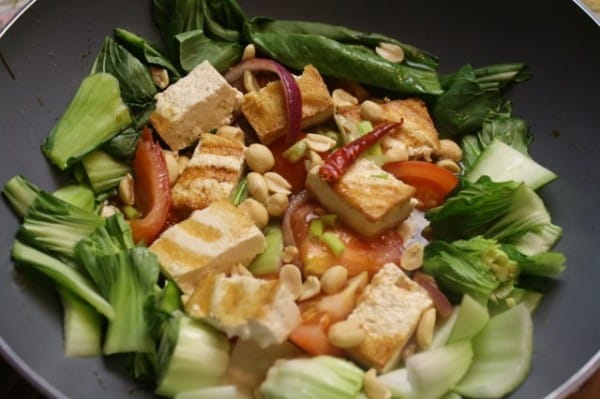 Winter was still here but Lent arrived without warning. February brought on Ash Wednesday and I wasn’t ready with my ‘no red meat’ meals for Fridays. But I had just cooked Tokwa Goreng – Indonesian-inspired Spicy Tofu with Vegetables so I knew everything would be okay. No matter where I’ve lived in the world throughout my life, the 40 days of Lent always bring me back to my childhood in the Philippines. My parents imposed strict rules about abstaining from red meat on all six weeks of Lent including Ash Wednesday and especially Good Friday.
Winter was still here but Lent arrived without warning. February brought on Ash Wednesday and I wasn’t ready with my ‘no red meat’ meals for Fridays. But I had just cooked Tokwa Goreng – Indonesian-inspired Spicy Tofu with Vegetables so I knew everything would be okay. No matter where I’ve lived in the world throughout my life, the 40 days of Lent always bring me back to my childhood in the Philippines. My parents imposed strict rules about abstaining from red meat on all six weeks of Lent including Ash Wednesday and especially Good Friday.
As the cold, bitter wind howled and the heavy snow fell relentlessly on the ground here in the east coast, I sat back, resigned to the long winter spell and went through my Facebook news feed to see what friends in warm Manila were up to.
The photo of ‘Tokwa Goreng’ with its brief, yet irresistible description jumped at me from my iPad. My friend, Guillermo or Ige Ramos, award-winning author, editor, book designer, Chef, historian, had just cooked this wonderful all-vegetable dish. I couldn’t stop staring at the photo so I quickly asked Ige what the dish was about.
“Tokwa Goreng is based on the Indonesian dish ‘Tauhu Goreng’ which has fried ‘tokwa’ (tofu).’Goreng’ means fried in Bahasa Indonesia,” explained the well-traveled Mr. Ramos. “This is vegetarian so it’s just right for Lent,” Ige said.
What fun it was to cook this delightful dish with ease. The list of ingredients was short and since I had everything needed in my pantry and refrigerator, I got cooking. There were several layers of flavors we enjoyed in the finished dish. The tofu (or known as tokwa in the Philippines) was pan fried crisp on the outside, but soft and billowy inside. The cubed tofu slices nestled against the sliced succulent tomatoes and leafy bok choy shreds. All these came together in a spicy, savory-sweet sautéed sauce with hints of ginger and garlic. Just before serving I sprinkled crunchy peanuts all over the dish and it was perfect to pair with a bed of fragrant, steaming jasmine rice.
When I put this piping hot bowl of Tokwa Goreng on our dinner table last Friday, it was so scrumptious that my husband, the carnivore, did not notice it was a meatless, all-vegetable dish. He just kept pouring the whole spicy slew of tofu and vegetables on his platter of rice, quietly gulping it down. Friday meatless meals during Lent are important to me and to my family. They are part of the rituals I grew up with. Rituals are important to anchor us. Traditions like these help us reaffirm our faith, satiate our spirits and reinforce our trust in the goodness of life.
Indonesian Tokwa Goreng- Spicy Tofu with Vegetables and Peanuts
Equipment
- Large Non-Stick Skillet- 12 inches diameter; Or a Wok
Ingredients
- 1/4 cup vegetable oil divided, 2 Tablespoons for stir fry, rest for pan fried tofu
- 14 ounces extra firm organic tofu
- 1 whole medium-sized onion
- 2 cloves garlic minced
- 1 Tablespoon minced fresh ginger
- 2 whole large tomatoes sliced
- 1 teaspoon miso paste bottled or from tubes
- 2 Tablespoons tamari soy sauce
- 1/4 cup vegetable broth
- 1 whole bird's eye chiliess crush or slice it only if you want a super spicy saucr; siling labuyo in the Philippines
- 1/2 teaspoon salt
- 1 teaspoon ground black pepper powder
- 3 cups shredded bok choy
- 1/2 cup roasted unsalted peanuts
- 2 stalks scallion greens chopped, for garnish
- for serving: boiled rice
Instructions
- In a large non-stick skillet or wok, over medium high heat, add the cooking oil. When oil is hot enough in about 2 minutes, place the whole slab of tofu. Pan fry on each side for about 5 minutes till the top layer is brown. Turn the tofu only once. Place browned tofu on parchment paper to drain excess oil. When cool enough, cut in 2-inch sized cubes. Set aside.
- Using the same large skillet and cooking oil, over medium high heat, saute the onions, garlic and ginger. Add the tomatoes.
- When onions and tomatoes have softened after about 2 minutes, add the miso paste, tamari sauce, vegetable broth (or water), birds’ eye chilies (siling labuyo), sugar, salt and black pepper. Blend well.
- When liquid has reduced after about 5 minutes, add the shredded bok choy (pechay), tofu cubes and mix well. Cover skillet and turn off heat. The residual heat in the skillet will soften and cook the bok choy in the last 5 minutes of cooking.
- Sprinkle the peanuts all over the dish just before serving. Serve piping hot with boiled rice (white or brown). Garnish with chopped scallions.
- Cook’s comments: In the original recipe, Chef Ige Ramos used oyster sauce. My personal preference was to use tamari sauce, a non-wheat (gluten-free) soy sauce which has less sodium.
- About the Chef: Guillermo 'Ige' Ramos is based in Manila and Cavite, Philippines. He has such a long, accomplished career in Philippine publishing that it would take another blog post to write about what he has done for the arts, history and the culinary world. Ige has won awards for dozens of books and cookbooks he has designed and essays he has written. He is the principal designer and editorial director of Ige Ramos Design Studio (IRDS) which produces Rustan's 'Sans Rival' Magalogue, of which he is the editor-in-chief. Ige gives workshops, lectures and coaching on Editorial Design and will release his book on Cavite cuisine this year. I am very proud to be his friend.
- Hello, Friends! All the images and content on this blog are COPYRIGHT PROTECTED and owned by my media company Besa-Quirino LLC. This means BY LAW you are NOT allowed to scrape, lift, frame, plagiarize or use my photos and recipe content I wrote, on your website, videos, TV programs, cookbooks, books, media content without my permission. If you want to republish this recipe or content on another website or news article, please ASK my permission, re-write it in your own words and simply link back to this blog to give proper attribution. It’s the legal thing to do. Thank you. Email me at [email protected]
Nutrition
Notes on Nutrition: The nutrition information provided is an estimate and will vary based on cooking methods and specific brands of ingredients used.
Did you like this recipe?I have more Filipino Instant Pot recipes in my newest cookbook Instant Filipino Recipes: My Mother’s Traditional Philippine Cooking in A Multicooker Pot by Elizabeth Ann Besa-Quirino. I also have more classic recipes inspired by my mother’s cooking in my popular cookbook: My Mother’s Philippine Recipes. If you’re learning how to cook Filipino food or a fan of Philippine cuisine, buy my cookbooks and books on Amazon.com sold worldwide in paperback and Kindle format.
Copyright Notice: Hello, Friends! Please DO NOT LIFT OR PLAGIARIZE my original recipe, stories, photos or videos. All the images and content on this blog are COPYRIGHT PROTECTED and owned by my media company Besa-Quirino LLC. This means BY LAW you are NOT allowed to copy, scrape, lift, frame, plagiarize or use my photos, essays, stories and recipe content on your websites, books, films, television shows, videos, without my permission. If you wish to republish this recipe or content on media outlets mentioned above, please ASK MY PERMISSION, or re-write it in your own words and link back to my blog AsianInAmericaMag.com to give proper attribution. It is the legal thing to do. Thank you. Email me at [email protected]

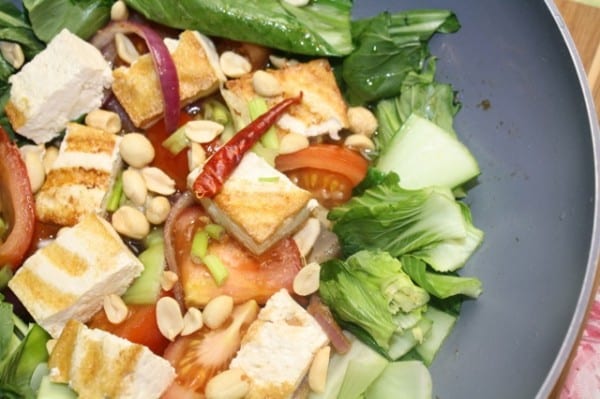
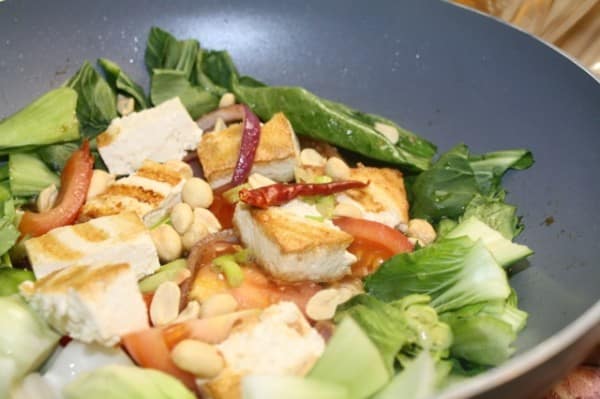


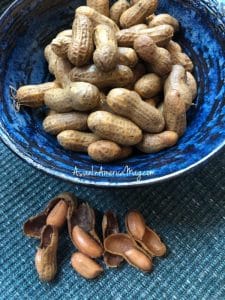

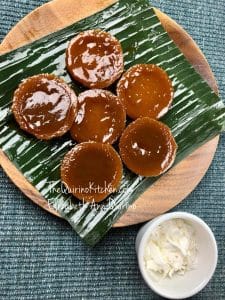

This is why I love coming to your site! Your recipes simply inspire me. 🙂
I like how simple this recipe is, and can just imagine the flavors.
Thanks, Jaden. So glad you came to visit my blog. I was taught this easy recipe by Ige Ramos, an award-winning book designer,author, chef, historian and good friend. And for the record, you inspire me so much,too 🙂